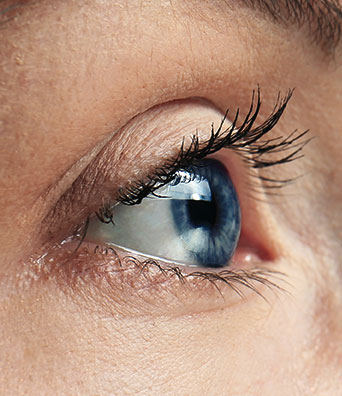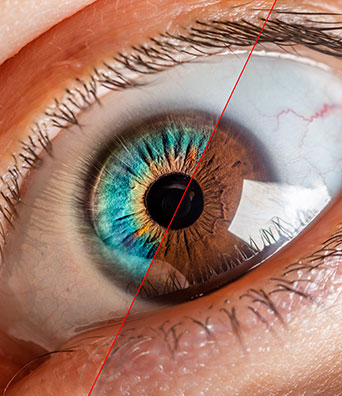Oculoplastic Surgery Dubai
What is Oculoplastics?
Oculoplastics or oculoplastic surgery, refers to several surgical procedures on the eye and the surrounding structures, including the eyelids, eye sockets, tear ducts, and parts of the face.
Oculoplastics is an umbrella term that involves the use of various techniques catered specifically for each specific operation or eye surgery. These surgeries are typically conducted by oculoplastic surgeons who are specialized in ophthalmologists and have undergone additional fellowship training to specialize in this field. Some surgeons coming from different other specializations such as ENT surgeons, maxillofacial surgeons, plastic surgeons, and oral surgeons may also be trained in procedures or techniques that are related to oculoplastics.
Why are they done?
The eyelids are one of the corporal structures that most suffer the effects of ageing and, in particular, those caused by the rays of the sun. The appearance of spots on the skin, wrinkles and bags under the eyes transforms the face in different ways for each person. People often begin to experience dissatisfaction with their image, and have the need to find possibilities for improvement.So all the treatments used to counteract ageing in the eyelids (blepharoplasty) are in extraordinarily high demand due to their good results.
Generally, oculoplastic surgery is done for either cosmetic and functional reasons. Usually, upper and lower eyelid blepharoplasty, eyebrow lifts, and eye bag removal are surgeries done for cosmetic reasons. Eyelid repair for entropion, ectropion, and ptosis on the other hand are done for functional reasons to improve the functionality and convenience of a patient’s eyes. Some other oculoplastic surgeries such as eye removal or reconstruction are also done for functional reasons, but these are done for a patient’s well-being and health.
90% of cases with Congenital Watery Eyes Heal By Themselves Before
1 Year
90% Of Watery Eyes Surgery Are
Successful
Oculoplastic Surgery FAQs
- Oculoplastic surgery can correct the following conditions in your eye.
- Ptosis droopy eyelids
- Entropion and ectropion conditions
- Skin cancers around your eyes
- Tear duct issues/blocks
- Eye injuries
- Eyelid lift to improve the appearance
- Weakness around eyes and eye problems caused by other conditions
Tear Duct Obstruction
An obstruction to the tear ducts is the cause of most cases of eyes watering. Patients who have blocked tear ducts cannot drain tears normally or like normal people do. This leaves them with a watery and irritated eye. A tear duct obstruction is generally caused by a partial or complete obstruction in a patient’s tear drainage system. However, the lesions may present at several points along the duct system for draining tears.
A blockage in the lacrimal punctum (the entry of the tear duct) causes intermittent watering with no infection, and requires surgical dilation. However, obstructions to the exit of the tear duct to the nose, which are the most frequent, produce watering first and, after a time, infections in the lacrimal sac.
Causes of tear duct obstruction;
- Chemotherapy medications and other radiation treatments for cancer can cause a blocked tear duct as a part of its many side effects.
- Injuries to a patient’s face can cause scarring or bone damage near the drainage system due to trauma. This disturbs the normal flow of tears through the tear ducts, thereby causing a blockage. This cause is more common among adults.
- Loose skin cells or small particles of dust lodged into the duct can also cause a tear duct blockage.
- Many infants are born with this condition. For infants, the cause is either because the tear drainage system is not fully developed or because of a duct abnormality.
- A chronic infection or inflammation in the eyes, nose, or the tear drainage system can make tear ducts prone to blockage.
- Sometimes the long-term treatment of eye conditions using eye drops, especially for glaucoma, can cause a blockage in the tear duct.
- The tiny openings that support the eye to drain tears (puncta) can get narrower when aging creating a blockage in the tear duct. So for some patients, tear duct obstruction can be caused because of aging.
- While this is a rare occurrence, tumor or, more specifically, a tumor near the nose or anywhere near the drainage system can cause tear duct obstruction.
Usually, tear duct obstruction doesn’t require a treatment for infants as it gets better within one and half years of occurrence. For adults or in severe cases, this condition is still treatable. The treatment depends on the cause, type of blockage, age and other eye conditions of the patient.
Treatment, for most tear duct illnesses, is surgical. An external or endonasal dacryocystorhynostomy (DCR) under local anaesthesia is the surgical technique with the best results, achieving disappearance or improvement in watering eyes in over 90% of patients.
Pathological Conditions Of The Eyelids
Changes in the position of the eyelids may be caused by:
- Outward rotation of eyelid (ectropion), leaving the lower part of the eye unprotected; reddening and watering of the eye can be experienced.
- Inward rotation of the eyelid (entropion), causing the eyelashes to be in contact with the cornea and causing ulcers and pain.
Changes in the position of the eyelids may be caused by:
- Facial paralysis: a defect in eye closure
- Blepharospasm, which causes abrupt eyelid closing movements
- Small, benign tumours that appear on the skin, such as warts, freckles, xanthelasmas, etc.
Ptosis Or Drooping Of The Upper Eyelid Treatment In Dubai
A drooping of the upper eyelid causes a conspicuous aesthetic defect and may impair vision if it obstructs the visual axis. Usually, a surgical intervention is necessary to repair the levator muscle, since it has become detached from the upper lid, causing it to droop down. When the muscle is severely atrophied, a circumstance that is occasionally congenital, there is still an option: suspending the lid from the brow using the patient’s own biological tissues (the fascia lata or the temporal aponeurosis) or easily integrated synthetic materials.
Blepharoplasty – Upper & Lower Eye Bags Surgery In Dubai
Palpebral bags or under the eyes bags are often more noticeable on the upper lids, where they are caused by excess skin; on the lower lids and the nasal portion of the upper lids, they are produced by prolapsed retro-ocular fat behind the eyelids. These defects can be observed by comparing the patient’s current aspect to his or her image from a few years back. The intervention to correct palpebral bag defects is called a Blepharoplasty, and consists of removing excess tissue from the lids, to make them look younger.
It can be performed with tungsten tips or CO2 laser, which allows for a precise cut and reduces surgical time, as it controls the bleeding. In order to remove excess skin, incisions are made inside natural skin folds, with the advantage of making the incisions invisible in a short period of time. All these procedures can be done under local anaesthesia, as outpatients, without patching the eyes during the post-operatory period, or just doing so for the first few hours.
Eye Prosthesis
In some people, if the eye has suffered severe damage due to trauma/injury or after complicated surgical interventions, it becomes smaller and can cause pain. In these cases, sometimes we opt for surgery which is called Evisceration. It consists of removing all the eye structures which can cause pain, preserving the eye wall and the eye’s muscles.
Afterwords, an implant, in the shape of an eyeball, is placed inside the eye socket to give it volume. Then after a few weeks, a shell is adapted on top of the implant to give the eye most natural appearance. This is a prosthesis and will have the same colour of your natural eye so that you do not notice differences between the two. This field of oculoplastics has evolved quickly in the past few years, and provides excellent results, whether these are from relatively simple procedures, or the use of the latest in laser technology.
Book An Appointment
Fill the form below or call/whatsApp +971 50 309 3131 to book an appointment.
Early treatment can prevent long-lasting consequences

